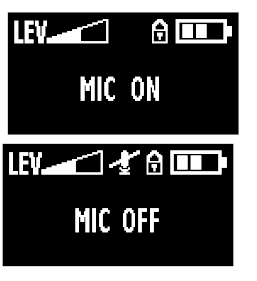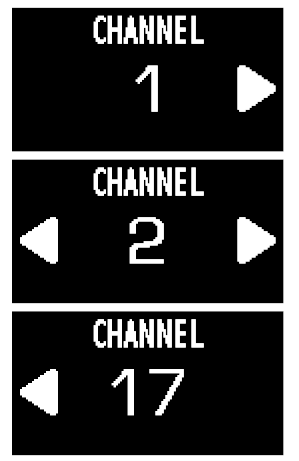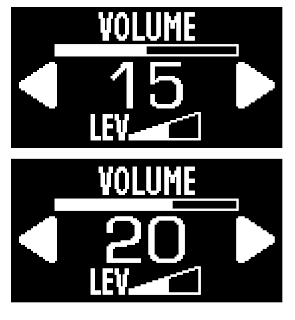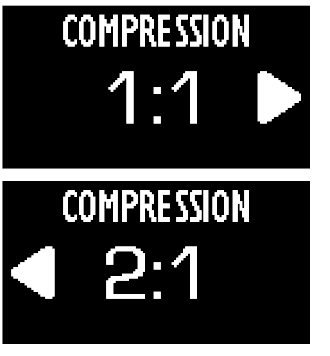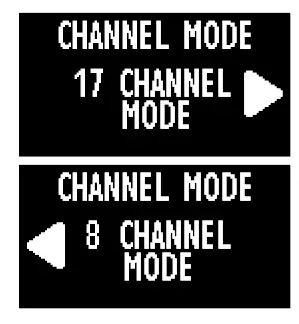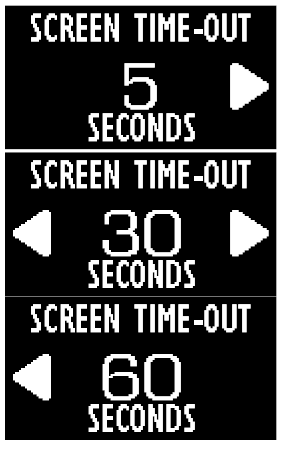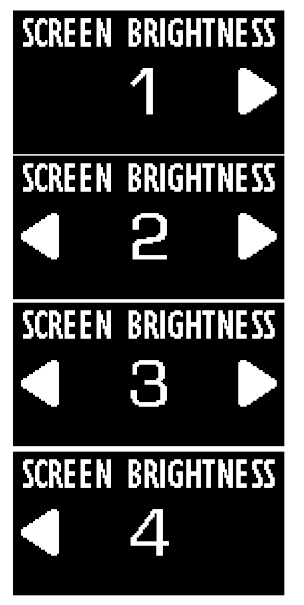WILLIAMS SOUND PPA T46 Personal PA Bodypack Transmitter

Safety Warnings
HEARING SAFETYCAUTION! Many Williams AV receivers are designed to amplify sounds to a high volume level, which could potentially cause hearing damage if used improperly. To protect your hearing and the hearing of others:
- Make sure the volume is turned down before putting on the earphone or headphone—only then adjust the volume to a comfortable level.
- Set the volume level at the minimum setting that you need to hear.
- If you experience feedback (a squealing or howling sound), reduce the volume setting and move the microphone away from the earphone or headphone.
- Do not allow children or other unauthorized persons access to this product.
BATTERY SAFETY AND DISPOSALCAUTION! Williams AV T46 transmitters are supplied with non-rechargeable alkaline batteries. Do not attempt to recharge non-rechargeable batteries; they may explode, release dangerous chemicals, cause burns, or cause other serious harm to the user or product.
PACEMAKER SAFETY
CAUTION! If you have a pacemaker or other medical device, make sure that you are using the Williams AV transmitter in accordance with safety guidelines established by your physician or the pacemaker/medical device manufacturer.
Servicing or attempting to service this device will void the warrantyRefer servicing to qualified personnel. Servicing is required when the system has been damaged in any way: if liquid has been spilled or objects have fallen into the unit, if the unit has been exposed to moisture, if the unit does not operate normally, or if the unit has been dropped.
System Overview
Thank you for purchasing the PPA T46 Personal PA™ Body-pack Transmitter. Much like a miniature radio station, the PPA T46 transmitter broadcasts over an FM radio signal. Receivers are used to pick up the broadcast up to 150 feet away. The system helps large or small groups overcome background noise and distance to clearly hear the speaker. The PPA T46 FM transmitter broadcasts voice and/or audio programs on one of 17 available channels, 72-76 MHz. Listeners use PPA R35-8 / PPA R37 receivers equipped with headphones, earphones, or neckloops to hear the broadcast. (An R1600 speaker can also be used.) The PPA T46 features a convenient, dual preset mode that allows users to set separate channel/volume/auxiliary gain levels for each preset and then toggle back and forth between them. The OLED user interface on the PPA T46 is an easy-to-read digital display and active read-out. The unit also features flexible microphone and auxiliary inputs, push-button on/off/mute controls, settings lock and selectable compression. To avoid difficulties, please read through these instructions, and keep them for reference.
Recycling Instructions
Help Williams AV protect the environment! Please take the time to dispose of your equipment properly.
Product Recycling Instructions:Please do NOT dispose of your Williams AV equipment in the household trash. Please take the equipment to an electronics recycling center; OR, return the product to the factory for proper disposal.
Battery Recycling Instructions:Please do NOT dispose of used batteries in the household trash. Please take the batteries to a retail or community collection point for recycling.
PPA T46 Included Parts(1) PPA T46 transmitter(1) BAT 001-2 AA batteries(1) WCA 087 auxiliary input cableMicrophone sold separately. All items can be purchased separatelyNote: The PPA T46 now replaces the PPA T36 transmitter in the Williams AV Personal PA TGS PRO 737 and TGS PRO MULTI FM tour guide systems, and the FM ADA KIT 37 and FM ADA KIT 37 RCH compliance kits.
Transmitter Applications
- Tours
- Schools
- Hearing Assistance
- Conference Rooms
Important Note about OLED Care
The PPA T46 must be powered off before removing the batteries. Failure to do so may decrease the life of the OLED display.
Features
Sleek, ergonomic designRange of up to 150’ (with PPA R37 receiver) 1.25” OLED interface displays:
- master volume level
- mic mute
- battery level
- settings menusAccepts electret mic with 3.5mm mono plug or audio source (MP3, CD player) Belt clip for hands-free operation Made in the USA 17-channel selectable, wideband, 72-76 MHz Digitally synthesized frequencies
Easy-to-use menu-access controls:
- microphone and auxiliary levels
- 8 or 17-channel mode selection
- current frequency/channel number
- compression (1:1 or 2:1)
- display settingsLifetime PLUS Limited Warranty (90 days on accessories) Meets ADA Accessibility guidelines
Quick Setup
- Open the battery compartment. Slide the battery selection switch to the correct position for the type of batteries that will be used. Use “Alkaline” for non-rechargeable batteries, “NiMH” for rechargeable NiMH batteries (only). (FIG. A)IMPORTANT: If the battery switch is not in the correct position, damage may be caused to the unit.
- Install the AA batteries. Be sure to observe proper polarity (+/-). Damage due to improper battery installation may void the warranty on the product. The battery icon on the display and the “Power On” LED on top of the unit will flash when the batteries are getting low; you may continue to use until the unit quits operating, then replace or recharge the batteries. (Figure. A)

- Plug in the microphone cord (sold separately) using the “Mic Jack” on top of the transmitter (Figure B).
- Optionally, plug in a desired audio source such as a CD or MP3 player using the “Auxiliary Input” jack (WCA 087 stereo auxiliary input cable included). If mic and auxiliary sources are used together, the audio will be mixed. If only an auxiliary source is desired, the mic can be muted. Do not remove the mic from the “Mic Jack” as the microphone cable is also the transmitting antenna. (Figure B)
- Turn the unit on: press and hold the “ON/OFF/MUTE” button for three seconds. The “Power On” indicator will illuminate green.(Figure B)

- Select the desired operating frequency. Refer to the following channel selection chart. Make sure the transmitter and receiver channels match. Up to eight T46’s can operate simultaneously on different channels. If this is desired, set each T46 to 8-channel mode (see Advanced Settings, Step 4). The frequencies in 8-channel mode correspond to the R35-8 channel set shown in the chart. This preset eight channel/frequency selection is the only configuration that will allow simultaneous eight channel use. (FIG. C)

- Change the transmitter to the desired channel. To access the channel setting, push the menu button until you see the channel displayed. Change the channel by pushing the left or right arrow buttons. Push the menu button to save the channel.(Figure D, Figure E) Note: To choose by frequency, see Advanced Settings.
- To access additional settings, push the menu button repeatedly until you see the setting you want. If no buttons are pushed, the screen will time-out and shut off.


- To install the belt clip on the rear of the T46, position the belt clip on the back of transmitter. Turn the belt clip 180˚ left or right to secure the clip. The transmitter can now be clipped onto a belt. To remove, turn the belt clip 180˚ so the open end of the clip points up, and gently pull the belt clip off. (FIG. F)

- Position the headset microphone boom as close to the speaker’s mouth as possible without actually touching. Lapel clip microphones should be close to the speaker’s mouth as possible.
- When you pause from speaking, you may mute the microphone by pressing the “ON/OFF/MUTE” button once momentarily. The button will flash. The front display will also indicate the mic is muted. To unmute the mic, press the button once momentarily again. Note: The AUX Audio Input is unaffected by the mic mute.
- When the T46 transmitter is not being used, turn the unit OFF by pressing and holding the “ON/OFF/MUTE” button for three seconds. The Power On indicator will go off.
Basic Setup
The Basic Setup Menu allows the user to change the most frequently used settings easily. The User can change the transmitting channel (or frequency), the master volume level, and the auxiliary volume level.
- Turn on the transmitter by pushing and holding the power button for 3 seconds. The transmitter will start up and show the following three screens.
 Note: While on the main screen, if the left or right arrow button is pushed, the following screen will show, indicating that you need to enter the menu in order to change any settings.
Note: While on the main screen, if the left or right arrow button is pushed, the following screen will show, indicating that you need to enter the menu in order to change any settings. - To mute the microphone, push and release the power button on the top of the transmitter. To unmute, push and release the power button again.

- To set the transmit channel, push the menu button until you see the channel set screen, below. Use the arrow buttons to select one of the 17 channels (see Channel Selection Chart in Quick Setup, Fig. C).

- To set the Master Volume Level (this is the microphone + auxiliary input volume), push the menu button until you see the master volume screen, below. Use the arrow buttons to adjust the volume level (1-30).

- To set the Auxiliary Volume Level (this is the auxiliary input volume before it is mixed with the microphone), push the menu button until you see the auxiliary volume screen, below. Use the arrow buttons to adjust the volume level (1-30).

Advanced Setup
The Advanced Setup Menu allows the user to turn compression on/off, change between channel and frequency display mode, change the transmitter to 8 or 17-channel mode, change the amount of time for display time-out, set screen brightness, and restore factory default settings.
- To access the Advanced Setup Menu, push the Menu button repeatedly to toggle through all of the basic settings, until you see the following screen. Push the right arrow to enter the advanced setup menu.

- Audio Compression reduces the volume difference between loud and quiet sounds. To set the audio compression ratio, push the menu button until you see the compression screen, below. Use the left, right arrow buttons to toggle the compression (1:1 = compression off, and 2:1 = compression on).

- To change the display to show either frequency (72.1-75.9MHz) or channel number (1-17), push the menu button until you see the frequency display mode screen, below. Use the arrow buttons to toggle between “FREQUENCY” or “CH NUMBER” .

- 8-channel mode restricts the transmitter to just the 8 non-interfering (simultaneous broadcast) channels. To change the transmitter between 8- channel and 17-channel modes, push the menu button until you see the channel selection mode screen, below. Use the arrow buttons to toggle between “17 CHANNEL MODE” or “8 CHANNEL MODE”.

- To change the display time-out period (5, 30, or 60 seconds), push the menu button until you see the time-out screen, below. Use the arrow buttons to toggle between “5 SECONDS” “30 SECONDS” or “60 SECONDS”.

- To change the screen brightness (level 1-4), push the menu button until you see the brightness screen, below. Use the left, right arrow buttons to toggle between “1” “2” “3” or “4”.

- To erase all user settings and return to factory defaults, push the menu button until you see the factory reset screen, “ERASE ALL SETTINGS RESTORE DEFAULTS?”, below. Push the right arrow button to choose “YES”. After this you will see the confirmation screen “FACTORY DEFAULTS RESTORED”. The transmitter will then return back to the main screen.

- To lock (or unlock) the settings, you must first be on the Main Screen. Then, push and hold the left- and right- arrow buttons together. While holding the buttons, you will see the following dashed-line display. Keep holding the buttons until all three lines disappear. The display will then show “PRESS MENU TO LOCK”. Push the Menu button. The display will then indicate “LOCKED”. To unlock the settings, follow these same steps in order.
Dual-Preset Mode
Dual-Preset Mode allows the user to instantly access one of two independent transmitting modes. Each preset can have it’s own frequency, master volume, and auxiliary volume settings. After setup, the user can easily toggle between the two presets.Note: only one frequency/channel can be transmitted at a time.
- Turn the transmitter off by holding the power button for 3 seconds. The transmitter must be OFF before performing the next step.
- To access Dual-Preset Mode, push-and-hold the Power and Menu buttons together and keep holding them until you see the following screen “LOADING…” below.
- The T46 will power up in Dual-Preset Mode looking similar to the following screen. “P1” and “P2” indicate the two presets. The currently selected preset is surrounded by the box showing “ON AIR”. “ON AIR” means that this preset is currently transmitting.
- Use the left or right arrow buttons to move the “ON AIR” box to the preset you want to adjust. (Note that you are now transmitting on this preset.)
- Push the Menu button and note that either “P1” or “P2” shows up on the top left corner of the screen. This indicates which Preset you are adjusting.
- Follow the steps under “Basic Setup” (starting at step 3) to set up each preset and “Advanced Setup” (starting at step 1) to change settings that affect both presets.
- To toggle between the two presets, exit out of the menu and use the arrow buttons to change between presets. Note: In Dual-Preset Mode, if settings are locked, the arrow buttons will allow you to toggle between presets, and the mic can be muted. All other settings are locked.
Specifications
| Dimensions: | 4.1” L x 2.8” W x 1.1” D (104 mm x 71 mm x 28 mm) |
| Weight: | 2.6 oz (74 g), no batteries |
| Color: | Black/Silver |
| Enclosure Material: | Shatter-resistant PC/ABS plastic with textured scratch-resistant aluminum faceplate |
| Battery Type options: | Two (2) AA 1.5 V non-rechargeable Alkaline batteries (BAT 001-2), 75 mA nominal current drain, up to 30 hours battery life |
| Two (2) AA 1.5 V NiMH rechargeable batteries (BAT 026-2), 75 mA nominal current drain, up to 20 hours battery life per charge, recharges in 14–16 hours, uses CHG 3502 or CHG 3512 Charger | |
| Operating Frequencies: | Selectable, 17 channels, 72.1 – 75.9 MHz*. Switchable 8 or 17 Channel Mode. (8-channel mode setting corresponds with PPA R35-8 receiver channels) |
| Stability: | ± .005%, frequency synthesized, crystal reference, PLL |
| Modulation: | Wide-band FM, 75 kHz peak, 75 µS pre-emphasis |
| RF Output: | 80 mV/m at 3 m (max. allowed by FCC rules) |
| Frequency Response: | 180 Hz to 13 kHz, ± 3 dB at 1% max. THD |
| Signal-to-Noise Ratio: | 65 dB (typical) transmitted |
| Transmit Antenna: | Integral with microphone cord |
| Microphone: | Electret type, 3.5 mm mono plug |
| External Display: | OLED for status and menu information.
Status: Ch/Freq, Mic Audio Level, Auxiliary Input Audio Level, Battery Status, Mic Mute, Channel Lock, Dual-Preset mode. Menu: Ch/Freq display mode select, Volume, Aux Input, Compression, 17 or 8-channel mode, screen time out, screen brightness, restore default settings |
| External Controls: | Momentary push button: push and hold 3 seconds for power On/Off, push and release for microphone mute On/Off. “Up”, “Down” and “Menu” buttons for accessing and changing transmitter settings. Battery type switch (Alkaline or NiMH) located behind the battery compartment door |
| External Indicators: | Power LED – Green, flashes when battery is low |
| Mic Input: | 3.5 mm mono jack with electret mic bias, adjustable gain with 25 dB range |
| Aux Input: | 2.5 mm stereo jack, adjustable gain with 60 dB range |
| Audio Compression: | 1:1 (off) or 2:1 (on) selectable in menu |
| Compatible Receivers: | PFM R31, PFM R32, PFM R33, PFM R36, PPA R35, PPA R37, PPA R35-8, PPA R1600, |
| Approvals/Directives: | FCC, Industry Canada, RoHS, WEEE |
| Warranty: | 2-year Warranty, 90 Days on most accessories. |
Note: FCC regulations, section 15.21, requires the user to comply with the rules of transmitter operation. Any changes or modifications made by the user not expressly approved for compliance may result in the loss of all privileges and authority to operate the equipment.NOTE: SPECIFICATIONS SUBJECT TO CHANGE WITHOUT NOTICE.
Troubleshooting
| Problem | Solution |
| Can’t hear the person speaking/no audio | · Verify Transmitter and Receiver are both ON
· Verify Transmitter and Receiver are both on the same channel/frequency. · Verify Transmitter mic is not muted. · Verify mic volume and aux volume levels – try turning them up. · Verify the microphone with cord is plugged in. The cord acts as the transmitting antenna. – Similar to the transmitter, the receiver earphone/headphone cord is the receiving antenna. Verify the earphone/headphone cord is plugged in all the way on the receiver. · If using the aux input, verify the aux source is playing, and the level indicator (on the front of the transmitter) is pulsing. |
| Can’t hear the person speaking above the room noise | · Adjust the microphone volume in the menu
· Reposition the microphone closer to the mouth |
| Limited Range | · The microphone cord is the transmitting antenna. Make sure it is not coiled up or obstructed, and that it is a Williams AV approved mic.
· Verify the transmitter distance from the receiver – try bringing them closer.
· Verify there are no other transmitters in the area on the same (interfering) channels. · Transmitter batteries low? Receiver batteries low? Try new batteries and if this works, recycle the old ones. |
| Feedback (squealing) | · Lower the microphone volume in the menu
· Increase the distance between the microphone and the listening speaker |
Supported Microphones
| TYPE | MANUFACTURER / FABRICANT | MODEL / MODÈLE |
| Unidirectional condenser | Williams AV | MIC 100 |
| Omnidirectional condenser | Williams AV | MIC 090 |
2-Year Limited Warranty
Williams AV products are engineered, designed, and manufactured under carefully controlled conditions to provide you with many years of reliable service. Williams AV warrants the Personal PA® FM Listening transmitters and receivers (models PPA T35, PPA T27, PPA T46, PPA R37, and PPA R35-8) against defects in materials and workmanship under normal use and conditions for 2-years from date of purchase.
This warranty is available to the original end purchaser of the product and CAN BE transferred to subsequent purchasers of the product. Microphones, earphones, headphones, batteries, chargers, cables, carry cases, and most other accessory products carry a 90-day warranty. Williams AV has no control over the conditions under which this product is used. Williams AV, therefore, disclaims all warranties not set forth above, both express and implied, with respect to the Personal PA® FM Listening System, including but not limited to, any implied warranty of merchantability or fitness of use of such equipment including, without limitation, any warranty that the use of such equipment for any purpose will comply with applicable laws and regulations. Williams AV shall not be liable to any person or entity for any medical expenses or any direct, incidental or consequential damages caused by any use, defect, failure or malfunctioning of the product, whether a claim for such damages is based upon warranty, contract, tort or otherwise, the sole remedy for any defect, failure or malfunction of the products is replacement of the product. No person has any authority to bind Williams AV to any representation or warranty with respect to the Personal PA® FM Listening System. Unauthorized repairs or modifications will void the warranty. This warranty is void if damage occurred because of misuse, or if the product has been repaired or modified by anyone other than a factory authorized service technician. Warranty does not cover normal wear and tear on the product or any other physical damage unless the damage was the result of a manufacturing defect. Williams AV is not liable for consequential damages due to any failure of equipment to perform as intended. Williams AV shall bear no responsibility or obligation with respect to the manner of use of any equipment sold by it.
This warranty does not cover reimbursement for your costs of removing and transporting the product for warranty service evaluation or installation of any replacement product provided under this warranty.The exclusions and limitations set out above are not intended to, and should not be construed so as to contravene mandatory provisions of applicable law. If any part or term of this Disclaimer of Warranty is held to be illegal, unenforceable, or in conflict with applicable law by a court of competent jurisdiction, the validity of the remaining portions of this Disclaimer of Warranty shall not be affected, and all rights and obligations shall be construed and enforced as if this Limited Warranty did not contain the particular part or term held to be invalid. The terms of the warranty are governed by the laws of the State of Minnesota.Prices and the specifications of the products are subject to change without notice. *For Complete Warranty Statement go to: www.williamsav.com/warranty-statement
NOTICE: Williams AV products are NOT designed for use in extreme temperature, humidity or chemical environments. The introduction of chemicals such as chlorine, salt water or human sweat into the product will cause damage to the circuitry. Damage due to these causes is NOT covered under the Product Warranty.
If you experience difficulty with your system, call toll-free for customer assistance:1-800-843-3544 (U.S.A.) or +1 952 9432252 (outside the U.S.A.)
If it is necessary to return the system for service, your Customer Service Representative will give you a Return Authorization Number (RA) and shipping instructions.
Pack the system carefully and send it to:Williams AVAttn: Repair Dept.10300 Valley View RoadEden Prairie, MN 55344 USAYour warranty becomes effective the date you purchase your system. If your sales receipt is not available, the date code on the product will determine your warranty status.
References
[xyz-ips snippet=”download-snippet”]

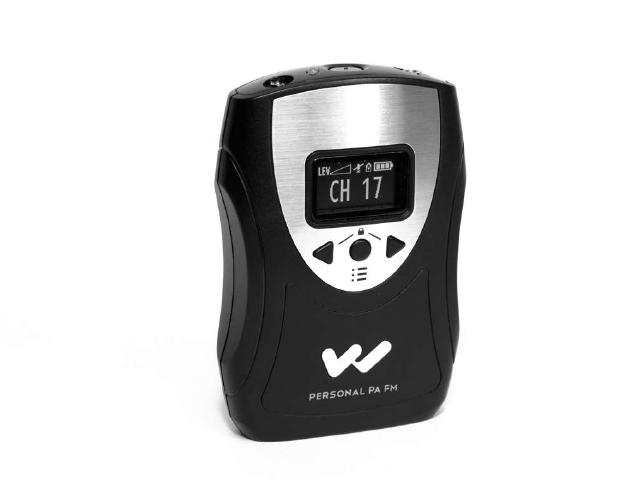
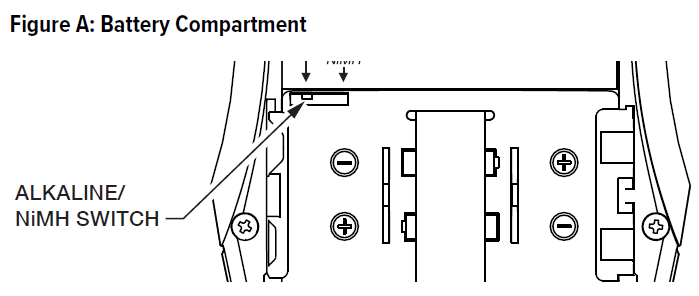
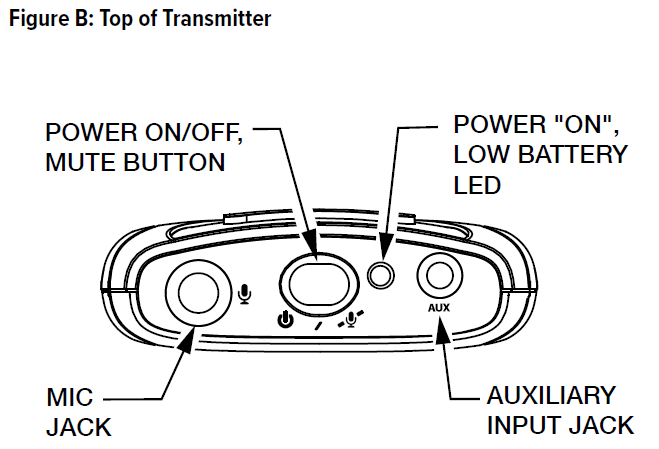
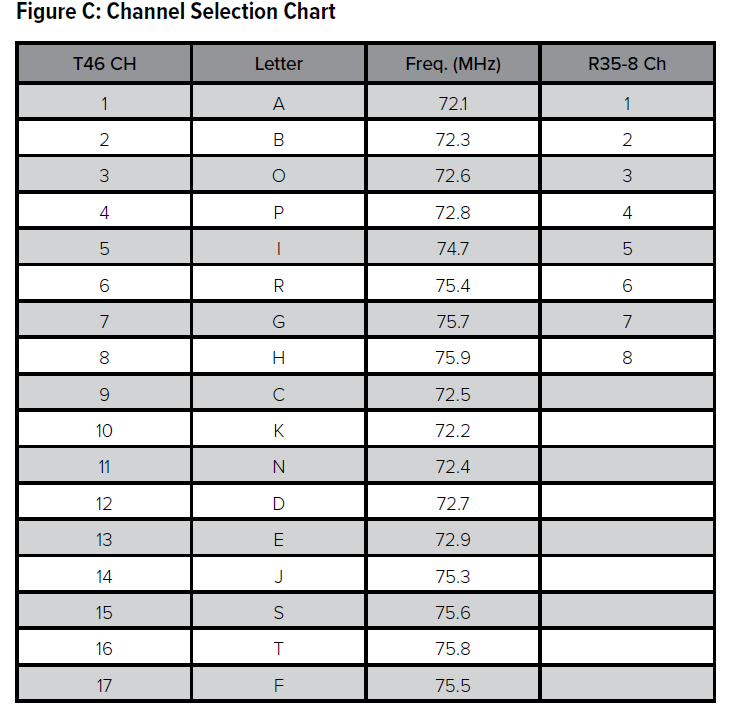


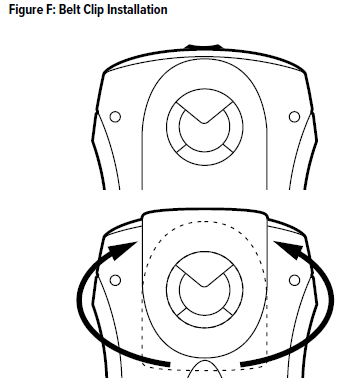
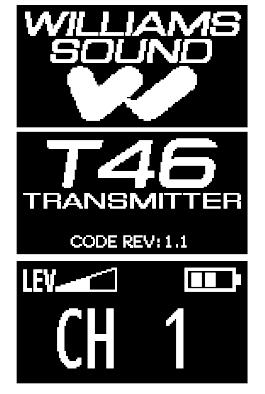 Note: While on the main screen, if the left or right arrow button is pushed, the following screen will show, indicating that you need to enter the menu in order to change any settings.
Note: While on the main screen, if the left or right arrow button is pushed, the following screen will show, indicating that you need to enter the menu in order to change any settings.